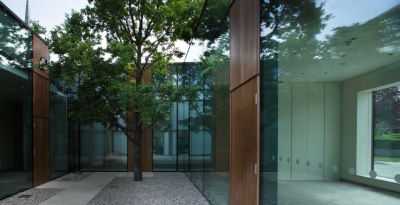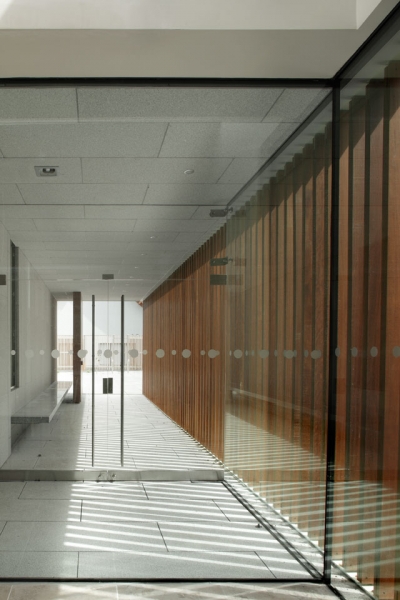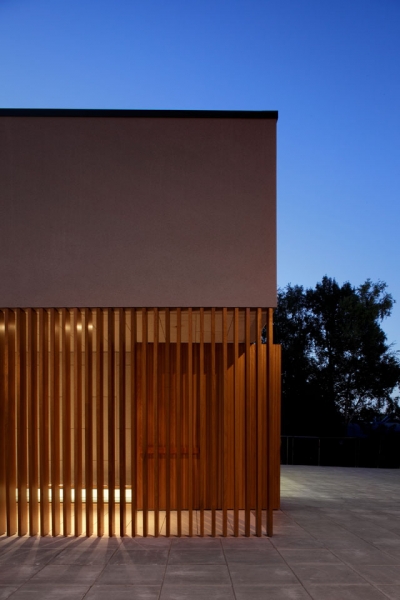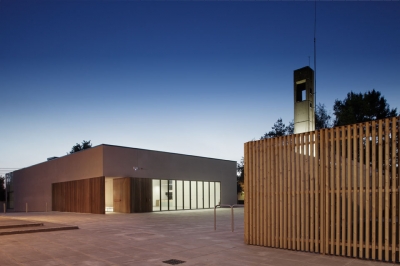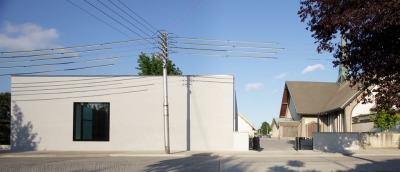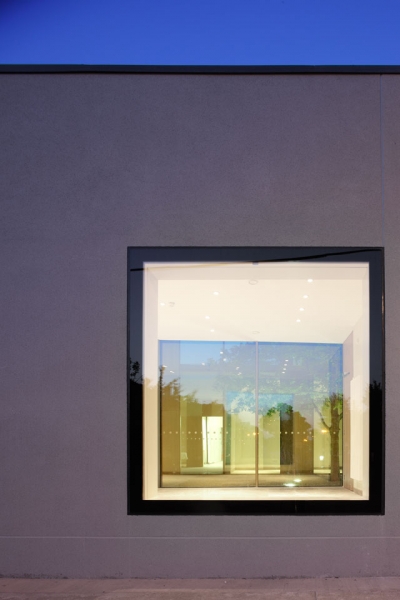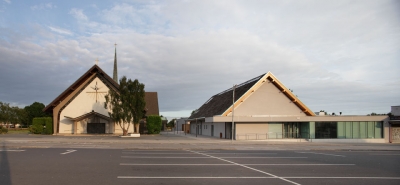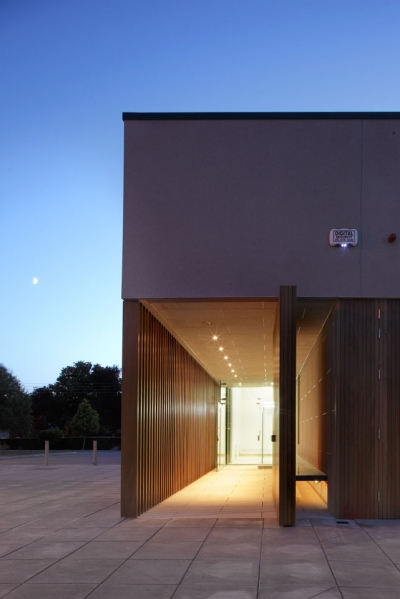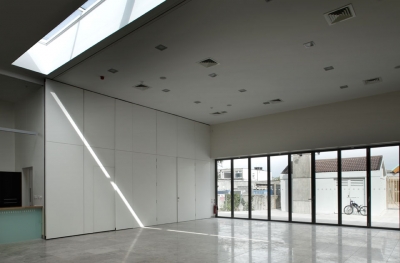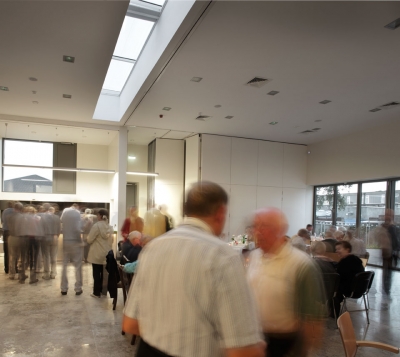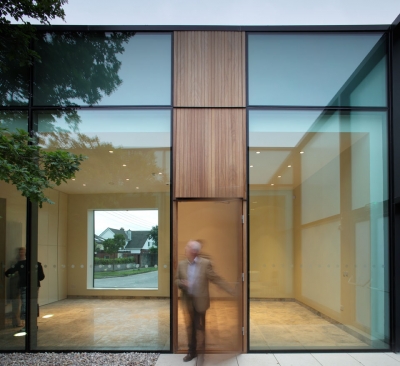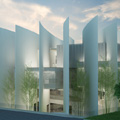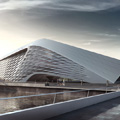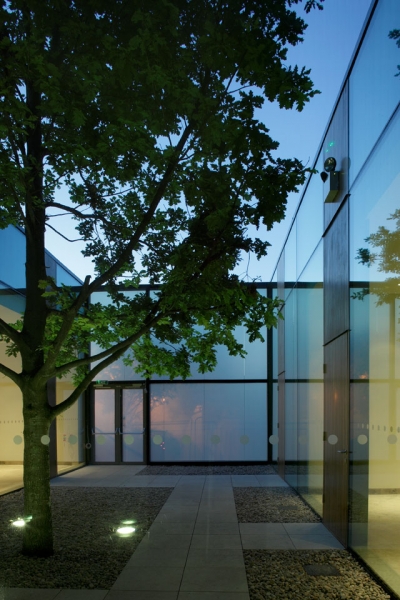
Project: Ballyroan Parish Centre
Designed by Box Architecture
Director: Gary Mongey
Design Team: Gary Mongey, Ashlene Ross, Terry Murphy
Area: 450 sqm
Location: Rathfarnham, Dublin, Ireland
Website: www.box.ie
Photo Credits: Paul Tierney
Box Architecture shares with us their design of Ballyroan Parish Centre in Dublin, the architects were asked to refurbish and extend the existing library of Marian Road. Discover more of their solution along with the project description after the jump:
From the Architects:
The client, South Dublin County Council, approached our office to refurbish and extend the existing library of Marian Road in Ballyroan, Rathfarnham in 2006. The brief expanded and, as part of the project, we were asked to look at refurbishing the existing community centre, which was in need of upgrading to modern space and environmental standards. It became quite evident early on that the extent of area required for the pastoral element was too large and a separate building was required. This was somewhat dictated by the space required but also by the presence of the boiler house and cast insitu chimney, which was retained and became a focus to the new civic space as the church and environs are protected structures.
Site Context
The church was constructed in the late 1960s by architect Raymond F Mac Donnell and is a very fine example of 1960s church architecture; well worth a detour with an elegant structure and very impressive modern stained glass windows. The existing community centre sits on the church site. The library is somewhat hidden behind a 1950s local centre which is in need of updating. The combination of the sites provides for an l-shaped site. The library is on hold but hopefully should be realised in the not too distant future. Once three buildings were established, the concept was to create a new sequence of public spaces and draw people in from the front of the church by the community centre into a shared central square and into the library.
Pastoral Centre
The initial idea was to create a spiritual building which was private; a solid element which is carved out or punched to create light and privacy. A-25-year-old anniversary oak tree was to be retained and sparked off the idea to create a building arranged around internal courtyards with the oak tree located in the largest courtyard. As this is a spiritual and sometimes private building, it was important that views in and out were controlled to avoid disturbances. To this end, we have provided very selective openings to maintain this privacy. Courtyards have obscure glass or are focused internally; openings with clear glass provide glimpses from within and from the outside: the main entrance, the fully open able doors from the main hall for use in larger gatherings, the flush square window to the west to the large meeting room and the high level sky view window over the kitchen. All windows are kept flush except for the high level kitchen window to maintain the solid feel. To signify that the building is open, the large timber pivot door is opened leading one into a low stone-lined entry space with a simple bench to sit and gather. The timber element continues as an open set of fins to create an open, yet enclosed transition entry space. Building materials are carefully limited to create a calm spiritual feeling; simple rendered walls, timber doors, stone floors and glazed screens affording views into the inner courtyards. Rooflights are arranged to highlight the movement of light, again signifying the spiritual nature of the building. After entering through the lower covered area one arrives into a taller space, the coffee and tea area with a small kitchen at the end allowing people to gather. The large hall has full height doors that enable different room layouts and privacy when required and fold neatly back into the designed location. The volume reduces as one enters the more private areas of the building. The first small room is the prayer room with its own small courtyard. Further along; a glimpse of the larger tree-filled courtyard starts to appear. Three more public rooms are arranged around this inner sanctum, the end of which has an obscure glazed screen to provide privacy and allow a plays of light. The last room is the priest’s room, which has its own private courtyard with an obscure glass screen to the outside. The toilets and main office are roof-lit.
Ballyroan Community & Youth Centre
There is an image of the refurbished building on the panels in context with the church. The layouts have been improved and rationalised and arranged around the retained main hall area, which mimicked the church and is a simple pitched element.
Energy
The buildings are conceived as being very energy efficient and close to passive house standards with elements u value of 0.16 w/ m2k throughout and the building achieved an A2 BER rating. Heat recovery units assist in the recirculation of the air with the need only for a domestic size boiler.


